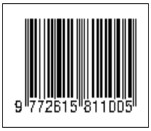ANALISIS EKONOMI DAN TINGKAT KESEJAHTRAAN RUMAHTANGGA PETANI PESERTA PROGRAM HUTAN KEMASYARAKATAN (HKM) DI KECAMATAN SAMBALIA, KABUPATEN LOMBOK TIMUR NTB
Abstract
Keywords
Full Text:
PDFReferences
Anonim. (2022). Statistik Kehuatanan. Badan Pusat Statistik, Jakarta.
Anonim. ( 2021). Nusa Tenggara Barat Dalam Angka 2022. Mataram
Anonim. (2021). Statistik Dinas Lingkungan Hidup dan Kehutanan Provinsi NTB. Mataram
Ansori,. (2010). “Pengelolaan Hutan Kemitraan Untuk Menyejahterakan Rakyat (Kasus Phbm di Perhutani BKPH Parung Panjang, KPH Bogor). Skripsi IPB Bogor.
Asriani. (2020). Eavluas Pengelolaan HKm di Kabupaten Lombok Timur. Skripsi. Fakultas Pertanian UNRAM. Mataram
Badan Pusat Statistik. (2022). Kabupaten Lombok Timur dalam Angka. Badan Pusat Statistik NTB: Mataram
Badan Pusat Statistik. (2022). Kecamatan Sambelia dalam Angka. Badan Pusat Statistisk NTB: Mataram.
Bambang Widayano. (2020). Faktor-faktor yang Memengaruhi Pengelolaan Hutan Rakyat yang Berkelanjutan d i Kabupaten Bantul Daerah Istimewa Yogyakarta (Abstrak) . (Disertasi UNS). Surakarta
Dewi IN, Awang SA Andayani W, Suryanto P. (2018). Karakteristik Petani Dan Kontribusi Hutan Kemasyarakatan (Hkm) Terhadap Pendapatan Petani Di Kulon Progo. Jurnal Ilmu Kehutanan 12: 86-98.
Dinas Lingkungan Hidup dan Kehutanan .(2021). “ Sebaran Lokasi Pengembangan Hutan Kemasyarakatan (HKm) Provinsi NTB”. Mataram.
Direktorat Jenderal Perhutanan Sosial dan Kementerian Lingkungan Hidup dan Kehutanan (PSKL), KLHK. (2022). Capaian Perhutanan Sosial Sampai Dengan 1 Oktober 2022. KLHK. Jakarta.
Indah Novita Dewi. (2018). Kemiskinan Masyarakat Sekitar Hutan dan Program Perhutanan Sosial. Buletin Eboni Vol. 15 No. 2 Desember 2018: 65-77).
Kementerian Lingkungan Hidup dan Kehutanan 2020. Status Hutan dan Kehutanan di Indonesia Tahun 2020. KLHK. Jakarta.
Nandini, R. (2013). “Evaluasi Pengelolaan Hutan Kemasyarakatan (HKm) Pada Hutan Produksi dan Hutan Lindung di Pulau Lombok”. Jurnal Penelitian Hutan Tanaman 10(1):43-55.
Nazir, M. (2014). Metode Penelitian. Ghalia Indonesia. Bogor.
Peraturan Menteri Kehutanan, No : P.37/Menhut -II/2007Tentang Hutan Kemasyarakatan
Ritonga dan Rochana. (2010). Keberhasilan Program Hutan Kemasyarakatan dalam Melestarikan Hutan. Jurnal Sosiologi Vol. 1 No. 2. Hal 132-137.
Rubangi Al Hasan, Yumantok. (2017_. Kemiskinan Masyarakat Sekitar Hutan (Studi Kasus di Pulau Lombok). Balai Penelitian Teknologi Hasil Hutan Bukan Kayu, Lingsar, Lombok Barat, NTB.
Soekartawi. (2016). Analisis Usahatani. Jakarta : UI – Press. Jakarta.
Sugiono. (2019). Metode Penelitian Kuantitatif Kualitatif R&D. Bandung .
Surakhmad. (2016). Pengantar Penelitian Ilmiah . CV. Tarsito Bandung.
Syahrizal. (2015). Strategi Pengembangan Hutan Kemasyarakatan dengan Pola Agroforestry di Desa Amal Kecamatan Sindue Kabupaten Donggala. Jurnal Sains dan Teknologi Tadulako, Volume 4 Nomor 1, Januari 2015 hlm 39-48 ISSN: 2089-8630
Yunasfi. (2017). Yunasfi, 2007. Sosial Forestry Dan Pemberdayaan Masyarakat Di Sekitar Hutan. Departemen Kehutanan. Fakultas Pertanian. Universitas Sumatera Utara. Medan
DOI: https://doi.org/10.35327/gara.v17i2.436
Refbacks
- There are currently no refbacks.
Copyright (c) 2023 GANEC SWARA

This work is licensed under a Creative Commons Attribution-ShareAlike 4.0 International License.
TERINDEKS
|
_______________________________
Ganec Swara
Published by UNMAS Denpasar K. Mataram |
Email: ganecswara@gmail com; aminullahmtk@gmail.com

This work is licensed under a Creative Commons Attribution-ShareAlike 4.0 International License.











